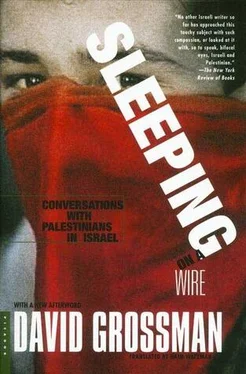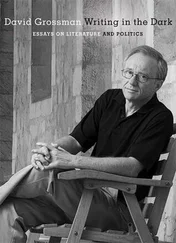There is no point in starting to detail the physical privation of the Arab schools. That is not the root of the Arab education problem. The question is, What could jar Arab consciousness and help those who wish to do so to extricate themselves from what impedes them? Here, at this point, precisely on the subject of education, it is necessary to examine the facts with a very sober eye, so as to discern when the country’s disregard is not coincidental, when banal apathy is no more than a cover for a flexed muscle. And while a string of numbers and data is liable to numb the mind, a story hangs by them.
In the framework of a program for disadvantaged children, the Ministry of Education has added a total of 40,000 annual teaching hours since 1970 (according to Elhaj’s survey, “The State of Arab Education,” 1988). Not a single one of these hours was allotted to any Arab school. Yet, according to studies by senior educators such as Professor Yosef Bashi and the late Dr. Sami Mar’i, most Arab students meet the criteria for being disadvantaged, given their low socioeconomic background and the large number of students who drop out of the Arab schools. The official explanation for this discrimination was that Arab students did not need this assistance because they, unlike Oriental Jews (for whom the program was intended), “did not suffer due to the transition from one culture to another”(!).
Eighty percent of the Arab pupils in need of special educational frameworks continue to learn — mostly for lack of funds — in regular schools. This may be the reason that at the high school in Jat, for example, three hired thugs roam the schoolyard armed with thick batons. “One is a deaf-mute, one is a shepherd, and all three are illiterate,” Ahmed Abu Esba, a former teacher, described them. “Is there another educational institution in Israel where order is kept by force? Sometimes, when a teacher has to confront problem students, he calls on them to beat the student in the classroom! Even in Brazzaville in the Congo there’s nothing like that!”
Of the 42,000 teaching hours allocated by the educational system as part of the “long school day program,” only 3,300 (8 percent) were given to Arab schools, which make up 20 percent of the educational system as a whole.
The Arabs in Israel have no real vocational program in electronics and computers. There are, however, many programs in auto mechanics for boys and sewing for girls.
Only 4 community centers have been built in Arab communities, as compared with 126 in Jewish municipalities.
According to data given me by the Ministry of Education personnel department, there is not a single Arab employee in the following departments of the ministry: the neighborhood rehabilitation department, the educational television center, the adult education department, the textbook unit, and — no less important — the road safety unit. Arabs (thirty-three of them, all told) work only in the division of Arab education and culture.
And where are the VCRs and the computers that you can find in almost every Jewish school? Where are the laboratories, the workshops, the sports facilities? Where are the counselors? Where are the psychologists (there are only twelve psychological treatment stations in the entire Arab school system; only ten positions for psychologists have been allotted to Arab education out of a total of 416 such positions in the educational system as a whole)? Where are the educational television broadcasts in Arabic, where is the advanced technological vocational education (it does not exist in Arab schools in Israel), where are the special-projects classrooms and the college preparatory programs? And what about enrichment like music, visits to museums, drama clubs, and reading rooms? Where are all the teaching aids that can stimulate thought and imagination and open new horizons?
And I’ve still said nothing about the subliminal messages that the Israeli educational system pours into the Arab student’s consciousness. According to Dr. Majed Elhaj, formerly a pupil in the system he now studies, these are messages meant to “create a submissive Arab, ready to accept his inferiority and Jewish superiority, thereby weakening and destroying Arab-Palestinian identity.” Azmi Bishara seconded: “Maybe the thing that pushed me from a young age toward social action was that, in eighth grade, in our grammar book, it said, ‘Decline in singular and plural forms: Jewish teacher, Jewish teachers; Arab shepherd, Arab shepherds’; that’s what I had to learn.”
At what point does ongoing dereliction become active negligence? What would the fair-minded person say upon reading the following lines from the notorious Koenig Report: “We should encourage referring [Arab] students to technology and the exact and natural sciences, because these leave less time for occupation with nationalism, and the drop-out rate is high…We should facilitate trips overseas for study, and make it difficult for them to return and find work — such a policy can encourage emigration.”
Something flickers behind these appearances, and invites us, the members of Israel’s Jewish majority, to once again ask whether several factors have not mated here to place a cunning and dangerous trap at our feet.
We have already said that we have an “easy partner.” There is an interest and a motive — even without a volatile Arab minority steeped in manifest nationalism, it would be difficult for us. Our interest and motive also have wide backing, tacit and vocal, from large parts of the Jewish public. And the State of Israel has, without a doubt, the most sophisticated and ingenious overt and covert mechanisms to ensure the “obedience” of the Palestinian minority, to keep it under control, to threaten it, and to try to bend it to our wishes, the security and educational systems in particular.
More important than all these together is that Israel today does not have the psychological force or the moral power to deal with the problem of the Palestinian minority. On the face of it, the problem seems insoluble, and a combination of circumstances has made the problem seem dormant. The slightest touch is liable to waken it. So it is best to tiptoe around it and pray that it fades, or melts away, on its own. Or something.
It is very hard to put one’s finger on the right words. After all, we are not talking here about a single, dramatic event. It is an ongoing, complex, ambiguous state of affairs. Every one of us can open this locked door with a different key and see only what he or she wishes. Israel can also point to achievements in its treatment of its minority. When it comes to living conditions and certain civil rights, the position of Israeli citizens, even Arabs, is far better than those of Syrian, Iraqi, Libyan, or Jordanian citizens. The Palestinians in Israel have indeed come a long way since 1948. Many Palestinians have found places for themselves in Israeli life; there are points of contact between the two peoples and joint ventures. Still…
I put together all the factors I have mentioned — the motive and the partner and the justification and the tools, and the temptation to forget it all; alongside I list the factual data known to me, some of which I have presented here, a long and depressing list of minuscule budgets, sparse services, discriminatory and one-sided legislation, social and cultural alienation. Faced with all this I ask whether one can reasonably deny that the manipulative process of suspension, or “active deferral,” or “pacification” has been going on for years and is going on now, performed by the Jewish majority in Israel against the country’s Palestinian citizens.
After all, exploiting the weaknesses — or building up the failures — of another is “legitimate” only toward someone for whom you wish ill, whom you wish to destroy — the enemy.
Читать дальше












